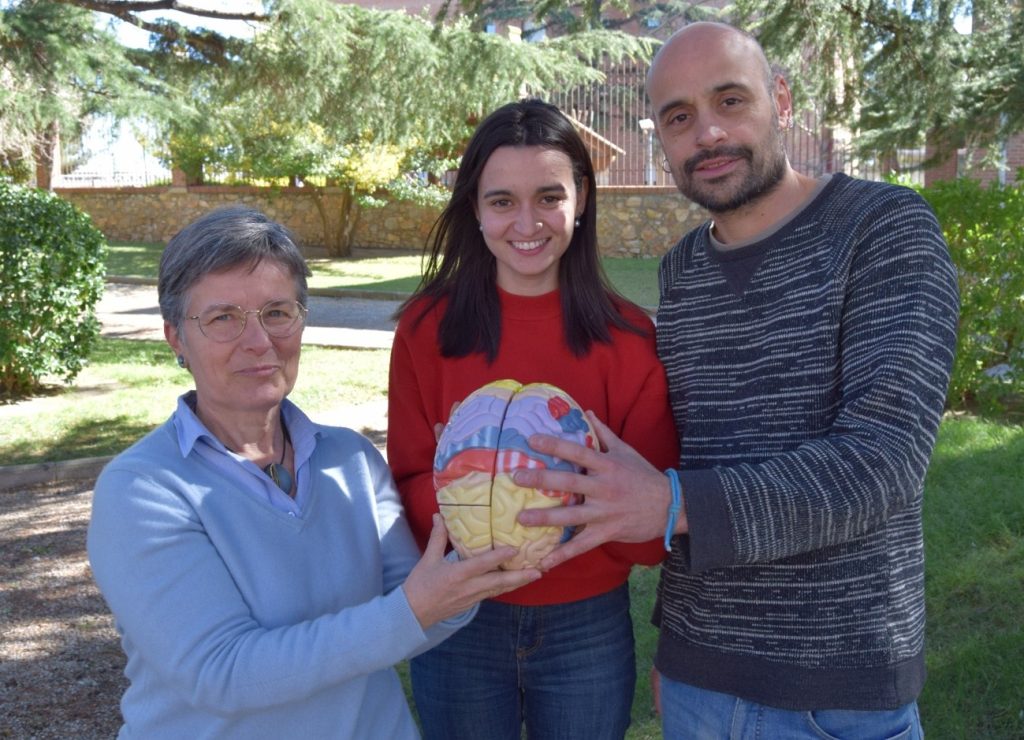
A study led by the Pere Virgili Institute of Health Research (IISPV), the Hospital Universitari Institut Pere Mata and the Center for Biomedical Research in Mental Health Network (CIBERSAM) shows that patients with schizophrenia and bipolar disorder have altered oligodendroglial cells (specifically, the expression levels of the discoidin domain receptor 1 or DDR1 gene, for its acronym in English). Until now, research into these diseases has focused on the study of neurons, which are the most abundant cells in our brain and about which we now have more information. Therefore, this finding opens a new scientific avenue, which could contribute to a greater understanding of the development of these mental illnesses, their cause and treatments.
Oligodendroglial cells are the third most abundant type of cell in the brain. They can be found in 3 distinct stages of maturation: precursor oligodendrocytes (most immature stage), pre-echelinizing oligodendocytes (intermediate stage), and myelinating oligodendocytes (most mature stage). The latter are responsible for coating neurons with myelin, a layer composed of lipids that acts in the same way that plastic covers electrical wires. Myelin allows information to be transmitted more quickly and efficiently in our brain. This process is vital for the proper functioning of this organ.
The results of this study were based on the analysis of 1721 postmortem brain tissue samples from patients diagnosed with schizophrenia and bipolar disorder, and from people without any psychiatric illness. These samples have been provided by psychENCODE, a repository of postmortem brain tissues, from donors in the United States. They have demonstrated alterations in DDR1 expression levels. Specifically, (compared to people without psychiatric disorders), patients with schizophrenia and bipolar disorder have lower levels of DDR1 expression in precursor oligodendrocytes and higher levels of DDR1 expression in pre-echelinizing oligodendrocytes.
If these results are corroborated, oligodendroglial cells could be considered a new therapeutic target for the treatment of schizophrenia and bipolar disorder. However, these findings should continue to be contrasted in future research aimed at understanding how alterations in DDR1 expression levels in oligodendroglial cells affect patients’ symptoms. In addition, studies in animal models and people will be necessary for treatments to finally be developed to restore the proper functioning of DDR1 and oligodendroglial cells, which will take years of study. “Our goal is to continue investigating the role of DDR1 in the different stages of maturation of oligodendroglial cells and its impact on patients’ symptoms, in order to be able to develop personalized treatments in the future,” explains Dr. Selena Aranda, a researcher in the Genetics and Environment in Psychiatry Group (GAP), which carried out this study. led by Dr. Elisabet Vilella.
Study That Would Revolutionize Schizophrenia and Bipolar Disorder
Schizophrenia and bipolar disorder are two of the most common serious psychiatric disorders. Most of the drug treatments currently available are aimed at improving neuronal functioning. However, these treatments are not effective for all patients and in most cases cause adverse effects. Finding new therapeutic targets and improving current treatments is key to improving the quality of life of patients and reducing the costs that this type of disease entails for the public health system.
The results of this study have recently been published in Translational Psychiatry, a prestigious journal in the field of psychiatry.
Bibliographic reference. Aranda, S., Muntané, G. & Vilella, E. Coexpression network analysis of the adult brain sheds light on the pathogenic mechanism of DDR1 in schizophrenia and bipolar disorder. Transl Psychiatry 14, 112 (2024). https://doi.org/10.1038/s41398-024-02823-0